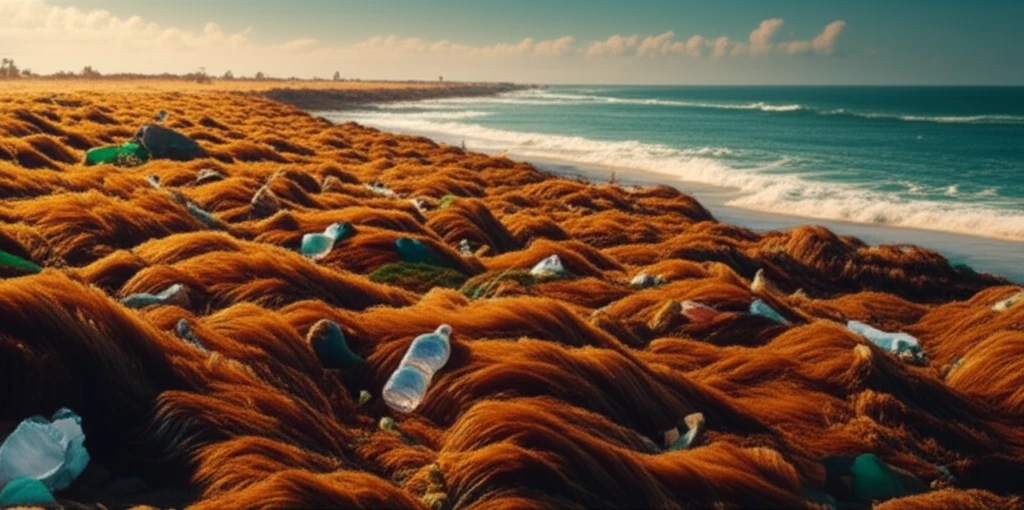
Seaweed Surge: Unpacking the Sargassum Invasion on Ghana's Coast and What It Means for You
"A preliminary investigation reveals the chemical composition of invasive Sargassum seaweed, highlighting potential risks and surprising benefits for coastal communities."
Imagine strolling along a pristine beach, only to be met by mounds of brown seaweed. This isn't just an eyesore; it's the reality for many coastal communities in Ghana, grappling with the invasion of Sargassum seaweed. First reported in 2009 in the Western Region, this natural phenomenon has become a growing concern, impacting everything from local biodiversity to the livelihoods of fisherfolk.
But what exactly is Sargassum, and why is it suddenly appearing on Ghana's shores? Sargassum is a type of brown seaweed that naturally occurs in the Sargasso Sea, a region in the Atlantic Ocean. While it plays a vital role in its native environment, providing habitat for marine life, its arrival in new ecosystems can disrupt the balance. The invasion is more than an environmental issue; it's a socioeconomic challenge that demands a closer look.
This article dives into the preliminary findings of a study that investigated the chemical composition of Sargassum seaweed along Ghana's West Coast. We'll explore the potential risks associated with its presence, uncover surprising benefits, and discuss the implications for the health and well-being of coastal communities. Whether you're a concerned citizen, a researcher, or simply curious about this environmental puzzle, this is your guide to understanding the Sargassum invasion.
Sargassum: Toxic Threat or Untapped Treasure?

The study, conducted by researchers at the CSIR-Water Research Institute in Ghana, aimed to identify and determine the nutritional and toxicological contents of the invasive seaweed. Twenty-four samples were collected from six zones along the Western Region and analyzed using Atomic Absorption Spectrophotometry (AAS).
- Potential as Organic Fertilizer: High levels of nitrate and ammonia make it a potential soil amendment.
- Heavy Metal Concerns: High concentrations of toxic metals could negate its benefits.
- Impact on Plant Life: Heavy metals can disrupt growth and metabolic processes.
Navigating the Sargassum Surge: A Call for Action
The invasion of Sargassum seaweed on Ghana's coast presents a complex challenge with potential risks and benefits. While the seaweed offers a potential source of organic fertilizer, the high concentrations of toxic heavy metals raise serious concerns about its safety and environmental impact. Further research is crucial to fully understand the long-term effects of the Sargassum invasion and to develop sustainable strategies for managing this natural phenomenon. It's a call for action that requires collaboration, innovation, and a commitment to protecting the health and well-being of Ghana's coastal communities.
